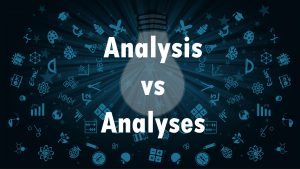- Introduction
- Purpose of the Study
- Thesis Statement
- The Rise of AI in Education
- Machine Learning Algorithms
- Personalized Learning and Student Engagement
- Chat GPT and its Educational Applications
- The Challenge of Identifying AI-Generated Responses
- Case Studies and Experiments
- The Ethical and Educational Implications
- Teacher Training and AI Literacy
- AI as an Educational Aid, not a Replacement
- The Future of AI in Education
- Conclusion
Introduction
The proliferation of artificial intelligence (AI), exemplified by technologies such as OpenAI’s GPT-4, has brought forth transformative shifts in the educational domain. These tools are becoming progressively integrated into classrooms worldwide by automating certain aspects of teaching and learning.
The role of AI ranges from administrative tasks, such as grading and scheduling, to more interactive functions, like personalized tutoring and collaborative learning. Mainly, chatbots powered by sophisticated models like GPT-4 can engage in human-like dialogue, providing instantaneous and adaptive responses that can significantly assist in students’ learning processes. The advent of such technologies presents immense potential for augmenting educational experiences while simultaneously posing new challenges and questions about their effective and ethical use in the classroom.
Purpose of the Study
This article explores teachers’ unique challenges when trying to discern AI-generated responses in the classroom setting. With the increasing sophistication of AI models like GPT-4, distinguishing between human and AI-generated responses has become significantly more complex. This exploration delves into the subtleties of these challenges, considering factors such as context, situational appropriateness, and the intricacies of language usage. The insights gleaned from this study aim to highlight the complexities of using AI in classrooms and inform future practices and policies to ensure the responsible and effective use of AI in education.
Thesis Statement
This research holds the central proposition that while AI, particularly GPT-4, ushers in a new era of personalized learning and efficient administrative functions, it also introduces an intriguing complexity to the classroom dynamics. The challenge lies in discerning between AI-generated and human responses, a task that is becoming increasingly intricate with the evolution of AI technologies. This analytical exploration seeks to elucidate how these changes impact classroom interactions, teacher-student relationships, and the broader education landscape.

The Rise of AI in Education
The journey of AI in education dates back to the mid-20th century, with the advent of computer-assisted instruction (CAI) systems. In the 1970s, the focus shifted towards intelligent tutoring systems (ITS), which could adapt learning to individual students’ needs. The 1990s brought the emergence of e-learning platforms, ushering in an era of distance learning facilitated by the Internet.
Machine Learning Algorithms
With the dawn of the 21st century, machine learning algorithms became more advanced, developing adaptive learning systems that could personalize content and pacing to individual learner’s strengths and weaknesses. However, it was not until the 2010s, with the advent of big data and the maturation of natural language processing (NLP) techniques, that AI became more interactive in education.
Technologies like OpenAI’s GPT-4 represent the cutting-edge of this trend, enabling AI to generate human-like text responses and adapt to the nuances of human conversation, thereby shaping a new era of AI-infused educational systems.## Challenges of Using AI in the Classroom
The emergence of AI technologies like GPT-4 presents a unique opportunity for teachers to leverage the powerful capabilities of these tools while at the same time introducing certain complexities to classroom dynamics.
Personalized Learning and Student Engagement
AI technologies, particularly chatbots like GPT-4, bring many benefits to the education system, among which the personalization of learning and increased student engagement are particularly notable. In personalized learning, AI can analyze a student’s learning pace, style, and areas of strength and weakness. This data-driven approach allows for tailoring the curriculum to suit each student’s needs, ultimately promoting a more inclusive and effective learning environment.
Moreover, AI can dynamically adjust the levels of difficulty and complexity of tasks based on a student’s performance. This adaptive learning approach ensures that students remain challenged but not overwhelmed, fostering a productive learning experience.
With regard to student engagement, AI chatbots can provide immediate responses to student queries, reducing waiting times and maintaining the flow of learning. Furthermore, AI can provide interactive and gamified learning experiences, making education more engaging and enjoyable for students. As the world ushers in an era of digital natives, the integration of AI in education resonates with the preferences and familiarity of students with technology, thereby increasing their motivation and engagement in the learning process.
Chat GPT and its Educational Applications
Chat GPT is an AI model OpenAI developed based on a machine learning architecture known as the Transformer. The primary function of Chat GPT is to generate human-like text based on the input it receives. It is a variant of the larger GPT (Generative Pretrained Transformer) model, fine-tuned for conversation and built to engage in a dialogue that is coherent, contextually appropriate, and human-like.
Several machine learning concepts underpin the workings of Chat GPT, but at its core, it is a language prediction model. Given a series of words or sentences as input, the model predicts the next word or sentence in the sequence. The model is trained on vast amounts of text data, and through this training, it learns the structure, semantics, and nuances of the language.
However, it’s important to note that Chat GPT doesn’t “understand” text like humans do. Instead, it identifies patterns in the data it was trained on and uses those patterns to generate responses. While its output can often be impressively coherent and contextually accurate, it is a sophisticated pattern-matching tool.
Chat GPT in Classroom: Use Cases
Chat GPT’s ability to generate human-like text has opened up several innovative avenues for its classroom application.
Tutoring and Homework Assistance
One of the prominent use cases is as a tutoring tool. Chat GPT can provide instantaneous and personalized assistance to students, aiding them in understanding difficult concepts or solving complex problems. For instance, it can assist with homework by providing step-by-step explanations, allowing students to grasp the methodology behind solving a particular problem. This is especially beneficial for students who might not have access to personal tutoring outside of school hours.
Language Learning
Chat GPT can be an invaluable tool for language learning, simulating dialogues, and allowing students to practice and improve their language skills. The model’s capability to grasp the nuances of language enables it to correct grammar, offer vocabulary suggestions, and provide contextually relevant responses, thus supporting the language acquisition process.
Facilitating Collaborative Learning
Additionally, Chat GPT can facilitate collaborative learning activities. It can be programmed to moderate online group discussions, ensuring all students can contribute and the conversation stays on topic. Its ability to generate contextually appropriate responses can stimulate productive discussions, fostering critical thinking and collaborative problem-solving skills among students.
Interactive Learning Modules
Chat GPT can also be used to create interactive learning modules. These modules can leverage the AI’s ability to offer adaptive, personalized content, promoting active learning and sustaining student engagement. Moreover, by integrating gamified elements, learning can be transformed into an enjoyable experience, leading to higher motivation and better learning outcomes.

The Challenge of Identifying AI-Generated Responses
As AI technologies, particularly Chat GPT, become more adept at generating human-like text, it becomes increasingly challenging for educators to discern between AI and human responses. Several factors complicate this task.
Degree of Sophistication
First, the degree of sophistication with which AI like Chat GPT can mimic human language usage—implementing appropriate syntax, semantics, and context—is considerable. This makes the textual output from these AI models highly similar to the responses a human might provide, creating ambiguity.
Different Response Formats
Second, in a classroom setting, where responses can be given in various formats—ranging from short answer questions to more complex essays—it becomes challenging to identify the subtle cues that might indicate an AI-generated response. The depth and breadth of the language models used by AI, such as Chat GPT, means that they can generate plausible responses to a wide range of prompts, further complicating the task of identification.
Lack of Tools and Guidelines
Finally, the lack of standard criteria, guidelines, or tools to assist teachers in detecting AI-generated responses contributes to the difficulty. AI models like Chat GPT do not only generate text, but they can also adapt to human language nuances, making it even harder for educators to distinguish between AI and human responses without significant training or specialized knowledge in AI and machine learning. This lack of reliable mechanisms adds to the complexity and uncertainty of identifying AI-generated content in an educational context.
Ultimately, the challenge that educators face in distinguishing AI-generated responses from those of students underscores the nuances and intricacies of integrating AI technologies like Chat GPT into classrooms. While they offer numerous benefits for personalized learning and student engagement, they also introduce new complexities that need careful navigation.
Case Studies and Experiments
Some case studies were conducted to evaluate the teachers’ ability to identify AI-generated responses.
Case Study 1: University of California San Diego
Researchers conducted a study in which teachers and students were presented with pairs of essays – one written by a high school student and the other generated by ChatGPT. They were then asked to determine which essay was authored by a human and which was written by the AI language model. The teachers’ accuracy rate was approximately 70 percent, while students achieved an average score of 62 percent.
At first glance, these may not appear to be poor results; after all, they are passing grades, right? However, the researchers argue that if distinguishing between human and AI-generated essays was simple, the accuracy rates should have exceeded 90 percent.
Case Study 2: High-Speed Training Experiment
An experiment aimed at discerning between AI-generated and student-generated content revealed that 60 percent of the participating teachers encountered difficulty distinguishing between the two. The experiment, conducted by High-Speed Training, involved a focus group of 15 secondary school teachers.
Each teacher was provided two responses to genuine questions from previous English Language, Geography, and Religious Studies exam papers. Their task was to determine whether the content was produced by students or by AI. The human-generated content was created by a focus group of three GCSE-aged students, while ChatGPT provided the AI-generated responses.
Out of the participants, three in five or 60 percent of teachers had difficulty identifying at least one answer they were assigned to review. Additionally, one in three or 33 percent of teachers needed to correctly identify both answers they reviewed. Shockingly, nearly half, or 47 percent, of all the answers reviewed by the focus group were incorrectly identified. This highlights the challenges teachers face in accurately reviewing and assessing the answers provided.
These case studies and experiments illustrate teachers’ challenges in distinguishing AI-generated responses from human responses. The sophistication with which AI can mimic human-like language usage and respond to various prompts makes it difficult for educators to discern the difference without in-depth knowledge of AI and machine learning.
The Ethical and Educational Implications
The use of AI, particularly in educational applications like Chat GPT, brings a host of ethical considerations that necessitate careful examination. These ethical concerns span across various dimensions:
Privacy and Data Security
At the core of AI’s functionality lies data. AI systems collect, store, and process vast data to deliver personalized learning experiences. This raises questions about the privacy and security of student data. Without appropriate measures, sensitive information could be exposed or misused. It is necessary to ensure that any AI application adheres to data protection laws and regulations and that students and their parents know the data collection processes.
Dependence on AI Tools
The convenience and efficiency of AI tools can lead to over-reliance. This could deter students from developing essential problem-solving skills, as they might turn to AI for answers instead of grappling with challenges. It’s essential to balance using AI with cultivating independent thinking and learning among students.
Fairness and Bias
AI systems, like Chat GPT, are trained on vast amounts of data, and their responses are shaped by the patterns they identify in this data. If the training data is biased in any way—be it gender, racial, or socioeconomic bias—these biases could propagate through the AI’s responses. This could lead to unfair and discriminatory educational experiences, which is a significant ethical concern.
Authenticity of Work
As AI becomes more sophisticated in generating human-like text, it becomes increasingly difficult to ascertain the authenticity of a student’s work. If students use AI to complete assignments instead of their work, it undermines the value of learning and the educational process.
Accessibility and Equity
While AI can make quality education more accessible, there is also a risk of exacerbating existing educational inequalities. Not all students have equal access to technological resources, which could lead to a digital divide where some students can benefit from AI’s advantages while others are left behind.
Addressing these ethical concerns requires the collective effort of educators, technologists, and policymakers. Clear policies and guidelines need to be in place to govern the use of AI in education, and constant vigilance is needed to ensure these tools are used responsibly and ethically.
Teacher Training and AI Literacy
The emergence and integration of AI technologies like Chat GPT in educational settings underline teacher training programs need to include AI literacy. In the current digital age, a basic understanding of AI, its capabilities, and its limitations is invaluable for educators. This extends beyond operational knowledge to understand the ethical implications, potential biases, and strategies needed to incorporate AI in classroom settings effectively.
As AI models become increasingly sophisticated and their use in classrooms more prevalent, teachers must be equipped to identify AI-generated content. This can help prevent misuse and ensure that such technology is used to enhance student learning. Furthermore, teacher training in AI literacy can instill confidence in educators navigating this new technology, empowering them to use AI to foster engaging, dynamic, and inclusive learning environments.
Preparing Educators for AI Integration
As AI permeates the educational system, educators must be prepared to interact with these technologies effectively. Several initiatives have been launched to this effect:
- Professional Development Programs – Several professional development programs now incorporate AI literacy into their curriculum. These programs aim to equip educators with a robust understanding of AI, its capabilities and limitations, and how it can be effectively integrated into classrooms. Participants are taught how to identify AI-generated responses, understand the ethical implications of AI, and learn how to use AI tools in a way that enhances student learning without replacing the crucial human element in education.
- Collaborative Workshops – Collaborative workshops involving educators and AI specialists are another effective strategy. These workshops provide a platform for dialogue between technologists and educators, fostering a deeper understanding of AI and its potential role in education. Through these collaborations, educators can gain insights into the intricacies of AI technologies like Chat GPT.
- Online Courses – Several online courses are now available, allowing educators to familiarize themselves with AI. Organizations such as Coursera, edX, and FutureLearn offer a range of courses, from AI basics to more advanced topics. These platforms provide accessible, flexible learning paths that accommodate educators’ busy schedules.
- AI Toolkits for Educators – Another notable initiative is developing AI toolkits tailored to educators. Such toolkits provide resources, guidelines, and practical exercises to help educators understand AI technologies and their applications in education. These toolkits often include step-by-step guides on integrating AI tools into teaching and learning processes.
Through these initiatives, educators are provided with the support and resources they need to integrate AI into their classrooms effectively. However, ongoing efforts are required to keep abreast of AI’s rapidly evolving field and address the ethical challenges that arise. Furthermore, these initiatives must be accessible to all educators, regardless of their geographical location or available resources, to ensure equity in AI-enhanced education.
AI as an Educational Aid, not a Replacement
While AI has the potential to revolutionize the educational sector, it’s paramount to remember that it should serve as an aid, not a replacement for traditional teacher-student interactions. The human touch in education—the ability to inspire, motivate, and connect emotionally—is something that an AI, no matter how sophisticated, cannot replicate. Teachers play a critical role in fostering a love for learning, understanding individual student needs, and providing personalized guidance based on each student’s unique learning journey.
Supplement Teacher Effort
AI tools like Chat GPT can supplement these efforts by providing personalized content, filling learning gaps, or providing extra assistance outside of classroom hours. However, they should not be seen as a substitute for teachers’ valuable interpersonal interactions and human empathy. Balancing AI technology with human-led instruction will ensure the educational experience remains engaging, meaningful, and enriching for all students.
Real-Life Experiences
AI tools like Chat GPT have shown the potential to transform the education sector by providing personalized learning experiences and enhancing student engagement. Here are some real-life examples of how AI tools have positively impacted teaching and learning:
- Personalized Learning Pathways: AI systems such as adaptive learning platforms can tailor education to individual student needs by identifying gaps in understanding and adapting content in real time to meet these needs. For instance, in the Thinkster Math program, AI monitors student progress and provides personalized worksheets to reinforce learning in areas of weakness.
- Intelligent Tutoring Systems: Intelligent tutoring systems are AI applications that provide personalized feedback and guidance to students as if they were dealing with a human tutor. For example, Carnegie Learning’s MATHia software provides step-by-step guidance in solving complex math problems, adjusting the difficulty level based on the student’s performance.
- Automated Essay Scoring: AI tools like Turnitin’s Revision Assistant can provide real-time, actionable feedback on student’s essays. This tool uses natural language processing to understand the student’s text and offers suggestions for improvement, thus helping students refine their writing skills.
- Virtual Reality (VR) Learning: AI-powered VR tools can create immersive, interactive learning environments that enhance student understanding and engagement. For instance, Labster offers virtual science labs where students can conduct experiments in a risk-free, virtual environment.
These examples demonstrate how AI tools can be leveraged to create a more engaging, personalized, and effective learning experience. It’s important to remember, however, that these tools should complement, not replace, the vital role of teachers in the educational process. Human interaction, empathy, and the ability to inspire remain integral to quality education.

The Future of AI in Education
Looking ahead, the role of AI in education is expected to evolve and expand, ushering in a new era of learning and teaching.
Personalized Learning at Scale
AI’s potential to offer personalized learning experiences to students on a mass scale is a game changer. Future advancements could enable AI systems to understand each student’s unique learning style, strengths, and weaknesses and adapt instruction accordingly. This level of personalization could foster a deeper understanding and improved retention among students, transforming traditional one-size-fits-all teaching approaches.
Intelligent Adaptive Learning Environments
As AI technology advances, people may witness the rise of intelligent adaptive learning environments. These systems could continually assess a student’s understanding and adjust the learning content in real-time, providing a truly adaptive learning experience. Such an environment could keep students continually challenged and engaged, leading to higher levels of achievement.
Seamless Integration of AI Tools in Classroom
In the future, integrating AI tools in the classroom could become seamless and intuitive. AI bots might assist teachers in administrative tasks, manage classroom activities, and provide real-time translation services for multilingual classrooms. Such advancements could free up more time for teachers to focus on instruction and student interaction.
Predictive Analytics in Education
Future AI systems could leverage predictive analytics to forecast student outcomes, identify potential learning gaps before they widen, and suggest interventions to help students stay on track. Educators could proactively address issues by incorporating predictive analytics and ensuring every student’s success.
Lifelong into
AI could also be crucial in lifelong learning and upskilling as the job market evolves. AI systems could provide personalized learning paths for adult learners, helping them acquire new skills or improve existing ones in line with market demands.
While these possibilities offer exciting prospects for the future of education, it is crucial to continue addressing the ethical considerations and potential biases of AI’s integration into education. The future of AI in education holds immense potential. But, it needs to be navigated with care to ensure equitable access, preserve the authenticity of learning, and maintain the imperative human touch in education.
Conclusion
Artificial Intelligence (AI), particularly models like Chat GPT, holds immense potential for the educational sector. AI tools can revolutionize learning experiences by offering personalized content, filling learning gaps, and providing extra assistance outside classroom hours. Nevertheless, AI must serve as an aid, not a replacement for traditional teacher-student interactions. Teachers play an indispensable role in fostering a love for learning, understanding individual student needs, and providing personalized guidance.
Furthermore, as AI continues to permeate education, there is a growing necessity for teacher training programs to include AI literacy to equip educators to identify AI-generated content and understand its ethical implications. Many initiatives are aimed at this, including professional development programs, collaborative workshops, online courses, and educator-specific AI toolkits.
However, ongoing efforts are required to keep abreast of AI’s rapidly evolving field and address the ethical challenges that arise in ensuring equity in AI-enhanced education. Looking to the future, AI’s role in education is expected to develop further, bringing about innovations such as personalized learning at scale, intelligent adaptive learning environments, seamless AI integration in classrooms, and the use of predictive analytics in education.
















